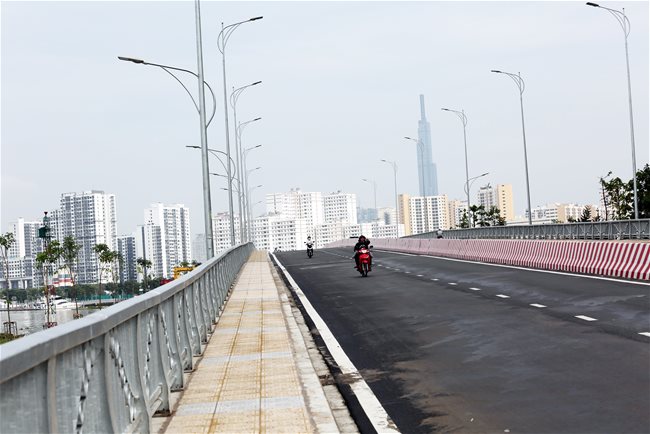Realty tax not only creates sources of collection for the State budget but also is a policy able to spur growth and reduce bribery related to land. Vietnam does have realty tax. However, the way the collection of this tax is currently enforced cannot be said to be fair and effective. The positive impact of this tax on the economy is limited.
During Vietnam’s time of subsidy, the State did collect land tax, as defined by Decree 661-TTg dated Jan. 1, 1956. This tax was not high and was levied on both land and assets associated with it. At the time, agricultural tax was the biggest source for the State budget.

No tax hike will be allowed for land used within the permitted quota. However, the progressive tax rate must be extremely high for excessive areas (Photo: Thanh Hoa)
On July 1, 1991, the then Council of the Ministers (the central Government) issued an ordinance on realty tax, according to which the annual tax rate for housing was 0.3% of housing prices (at market price) and for land was 0.5% of the “taxable value.” In reality, the “taxable value” was actually the market price of the land. However, as “land price” was still a “taboo,” that term was used instead.
More than one year later, on July 31, 1992, the State Council, the Standing Committee of the National Assembly now, enacted a new ordinance on realty tax which collected tax on land but not on houses. In accordance with this ordinance, tax levied on non-agricultural land was calculated by multiplying the agricultural tax by a coefficient. The coefficient was from 3 to 25 for urban land, one for rural and mountainous areas, 1.5 for midlands and 2 for lowlands. Considering international practices, realty tax collected in line with the 1991 ordinance was “better” than the 1992 ordinance.
As the realty tax was way too low, on May 19, 1994, the Standing Committee of the National Assembly issues an ordinance on the revision of the existing ordinance on realty tax, mostly adjusting the coefficient. As a result, the coefficient application to urban land was higher (from 3 to 32), that for agricultural land was universally one (for all regions) and a new coefficient was introduced: that for suburban districts, from 1.5 to 2.5.
Step by step, resources from land have been more highly regarded in the context of the market economy. Land price has been officially accepted in the 1993 Land Law. The Ministry of Finance then realized the importance of realty tax and confessed that realty tax based on the use of agricultural land was inappropriate. The realty tax calculation method in 1992 (revised in 1994) was way too obsolete. In 2007, the European Union funded a project to help the Ministry of Finance study the drafting of the Law on Wealth Tax.
Such a study has not been finished yet. But in 2010, the National Assembly began to press for the creation of the Law on Tax for Non-Agricultural Land Use, which meant it excluded other assets associated with land. On June 17, 2020, this law was discussed and passed, which resulted in an annual tax rate obtained by multiplying the land value fixed by the State by a coefficient. The tax rate was 0.03% for land area within the permitted quota and 0.07% for excessive land, but not higher than three times and equal to 0.15% for area three times larger than the quota.

In Vietnam, tax levied on non-agricultural land is way too low, about 30 times lower than in some developed countries
Realty tax too low with no regulatory effect
The law on tax for the use of non-agricultural land has been effective for 10 years. According to average calculations, during that decade, tax levied on the use of non-agricultural land accounted for only 3.5% of the total collections from land, or 0.35% of the total budget collections, or 0.7% of the local budget collections. A look at other countries will show a different picture when the same tax gains between 1% and 1.5% multiplied by the land value at market price.
The outcome is no land speculation mounts, land price goes down, the State budget is higher, land is more accessible, more housing is available for citizens, investment attraction is stronger and national competitiveness improves. Land is just a simple issue there.
According to classical economics represented by Adam Smith and David Ricardo, land is the major resource with which to facilitate the accumulation of initial capital for industrialization. The resource is concentrated via the introduction of public land to the market and imposition of land use tax. A country may become wealthy if she knows how to capitalize on her land. Hernando De Soto published plenty of works on national development hinging upon land use. He explained why only countries in the G-7 group were successful in the industrialization process to become developed economies. The conclusion was that these nations knew how to exploit the financial strength coming from land. This explanation has also enabled many countries to transform themselves into new industrialized ones.
Scholars specialized in land socio-economics argue that realty tax not only creates sources of collection for the State budget but also is a policy framework which effectively regulates the market. First, land is considered a natural endowment for humankind. Therefore, land users have the obligation to pay high tax to be fair with other people who do not have access to land. This is the goal of ensuring social equality in land use.
Second, high realty tax piles a heavy pressure on landlords forcing them to make full use of their land to have money to pay the tax.
Third, residents in the land contribute fees via land tax and housing tax, which are used to develop infrastructure and public utilities on the land. Higher tax also means a greater pace of development and higher living standards.
Fourth, high realty tax will curb land speculation, reduce land prices, cut input production cost and commodity and service prices, raise national competitiveness and attract more investors. On the other land, this is a way to curb bribery related to land as it is very hard to hide money in the form of realty.
Fifth, higher realty tax will force everybody to choose his or her own residence most suitable to the income. In other words, this is a workable way to solve the problems of population and labor redistribution in the market economy.
In addition to realty tax levied on land and assets associated with land, some countries also impose two additional taxes. The first is the tax levied on added value not coming from landlords’ investment using the land in question, which means added value due to State investment or other investors. The second is the tax levied on income from real estate transfers which are for commercial purposes happening within a short time from a buy to a sell. To apply these two taxes, the systems which set land prices must be highly workable and regularly updated in line with market prices.
In Vietnam, tax levied on non-agricultural land is way too low, about 30 times lower than in some developed countries. Meanwhile, tax on income gained from real estate transfers is relatively compatible to that in developed countries in urban areas and their suburbs, but is rather high in rural areas compared with farmers’ income. These discrepancies have led to land-related taxes remaining too low and brought about virtually no regulatory effect.
The majority of the nouveau rich in Vietnam have relied mostly on land accumulation, including land speculation or money accrued to land. Bribery related to land always tops the list. Plenty of government officials have gone to jail because of land. The costs of domestic commodities are high because land rents are high; particularly housing prices are beyond the affordability of ordinary workers. Consequently, national competitiveness declines, which can be raised only by land subsidies. The above situation paints a bleak picture of land in Vietnam although land belongs to the people’s ownership.
Renovation needed
The Ministry of Finance has many times proposed the imposition of new realty taxes or additional taxes, either in the form of wealth tax or tax on the second house onward. Each time such a proposal is made, it stirs public debates. But conflicting opinions cool it down again. Partly because of inadequate preparations, proposals fail to convince others. Partly because people tend to resent high taxes. However, most importantly, in my opinion, the objection comes mostly from landlords who try every way to block the reform of realty tax. Their key argument is that Vietnamese are still too poor to shoulder high realty tax.
However, the introduction of realty tax or wealth tax is urgent for the sake of our national development. The benefits of these taxes have been clearly shown above. The core of the issue is how they are drafted to fulfill the goal with no adverse effects on the people’s livelihood. Such a policy should create actual effects allowing land to both give impetus to the economy and ensure social equality.
In such a context, the following issues should be addressed.
First, no tax hike will be allowed for land used within the permitted quota. However, the progressive tax rate must be extremely high for excessive areas.
Second, as regards assets associated with land, taxation must be imposed in a way that must not restrict investment but encourages it, in which housing tax does not rely on the house’s value but on its area.
Third, realty tax levied on constructions on land which are used for production or trading must be scrutinized carefully taking into account land use tax in relation to corporate income tax and value-added tax in a way that encourages production and trading.
Fourth, there need be additional tax levied on added value without investment by landlords.
Fifth, it needs to have a revision of income tax levied on income reaped from real estate transfers with high tax rates applicable to commercial purposes. The progressive rate is inversely proportional to the time from taking the transfer to relinquishing it.
In 2011, the World Bank conducted a rather comprehensive study on Vietnam’s tax system reform. In my opinion, the Ministry of Finance should scrutinize this study to draw up a draft of realty tax regime for the sake of better economic efficiency and social equality.
Dang Hung Vo
(The Saigon Times)







